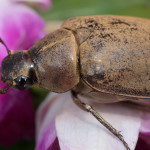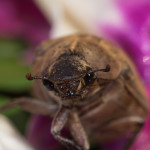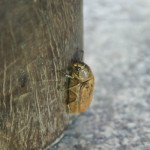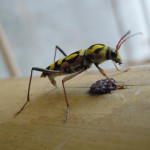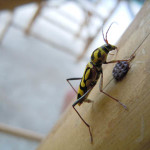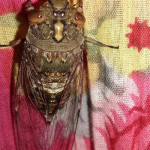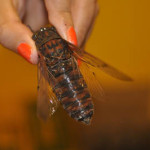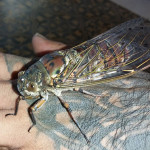Xenocatantops
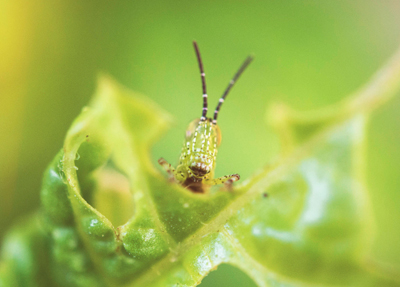
Image Copyright Jonathan Milnes
Observed: 2015, Koh Chang
Observed By: Jonathan Milnes
This grasshopper found on Koh Chang is amember of the Genus Xenocatantops, species of which are found throughout central Africa and Southern Asia.
Xenoctatntops at orthoptera.speciesfile.org
Sagra Femorata
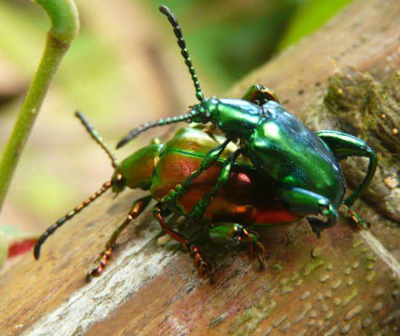
Observed: November 2015
Observed By: Coco Trilo
Sagrata felorata is a very beautiful small (20mm) beetle with a stunning iridescent blue-green colour. The species is widespread and is found across South and Southeast Asia.
The insects pictured are both males. The species exhibits a profound sexual dimorphism meaning that males and femals are very different in size and appearance – in this case the males are far larger and more brightly coloured.
Sagra Femorata Wikipedia
Lepidiota Stigma
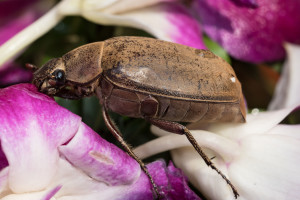
Image: David Vinot
Observed: February 2015
Observed By: David Vinot
Lepidiota stigma is a small beetle found in koh Chang.
It is noteworthy because it is capable of producing the purest natural form of white colouring – at least according to the link below.
Lepidiota stigma nhm.ac.uk
Cosmophasis sp.
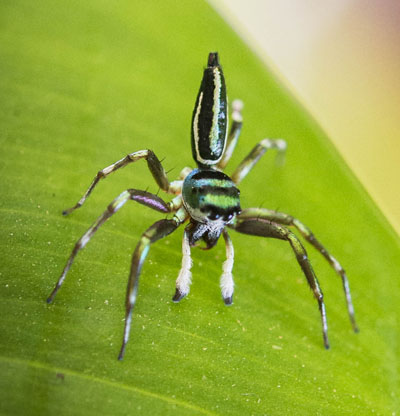
Image Copyright Jonathan Milnes
Observed: November 2015
Observed By: Jonathan Milnes
Cosmophasis is a genus of jumping spider found on Koh Chang that, as the name implies, gets around by extremely powerful and agile jumps.
They are small spiders of only a few millimetres length but have a bold and striking black and green-blue striped colouration. This one is a male, we’re not sure of the exact species, just the gender.
ID Navapol Komanasin
Eastern Tent Caterpillar (Malacasoma americanum)
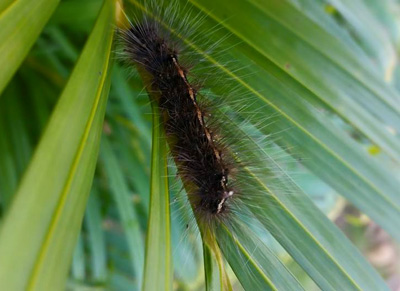
Image Copyright Rinske Hackman
Observed: November 2015
Observed By: Rinske Hackman
The Eastern tent caterpillar is the juvenile form of the the lappet moth. It is covered in immensely long hairs that serve as protection from predators.
Upon hatching thes ecaterpillars gather together under a tent that they weave out of silk until they have grown to a stage where they can progress alone.
The Wikipedia entry is particularly informative about pretty much everything you could ever think of to ask about this animal.
Eastern tent caterpillar Wikipedia
Batocera rufomaculata
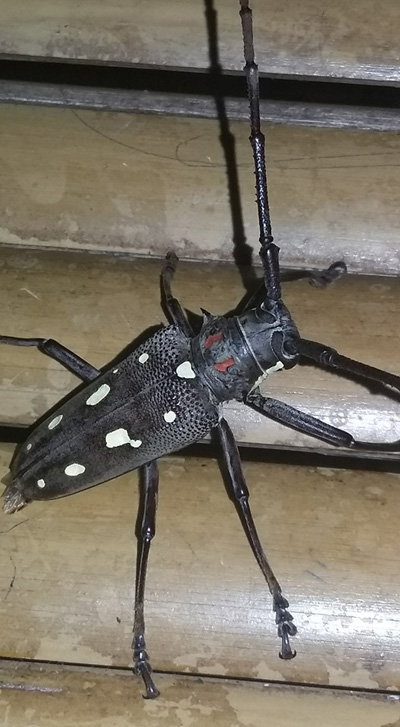
Image Copyright Supotch White
Observed: November 2015
Observed By: Supotch White
Minor controversy surrounds this sighting. It looks like a longhorn beetle but has been identified as its close cousin Batocera rufomaculata. When we get the help of an expert entomologist (hint, hint) we can iron out little issues like this – in the meantime we present a great photo of a pretty cool beetle.
Batocera rufomaculata Wikipedia
Artena Convergens
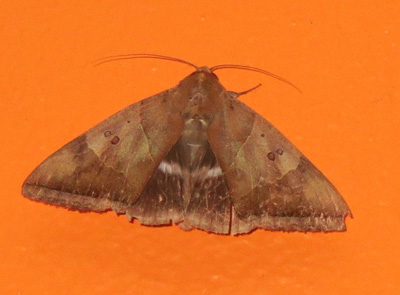
Image: Dave Hinchliffe
Observed: November 2015
Observed By: Dave Hinchliffe
Information is a little scarce on Artena convergens. Wikipedia is unusually reticent and it doesn’t seem to have been given a common name, poor thing. It’s quite a pretty moth as well, subtle colours, but attractive. Anyway it’s a moth of the Noctuidae family that has been spotted on Koh Chang, more specifically on my kitchen wall.
Artena Convergens Wikipedia
Blue-Banded Bee (anthophorid genus amegilla)
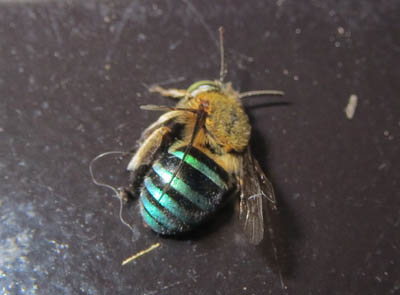
Image: Dave Hinchliffe
Last Observed: November 2015
Observed By: Dave Hinchliffe
The blue-banded be is a bee, with blue bands. In fact it’s a dead ringer for the yellow and black honey bee that you’re probably more familiar with except for the colour variation. And it doesn’t make honey.
It is a vital insect to agriculture and also to natural plant pollination – particularly in Australia – because it practises a very efficient form of pollination know as buzz pollination.
The blue-banded bee can sting but is less agressive than other species of bee and they are solitary dwellers.
Blue-banded bee Wikipedia
Bamboo Loghorn Beetle (Chlorophous Annularis)
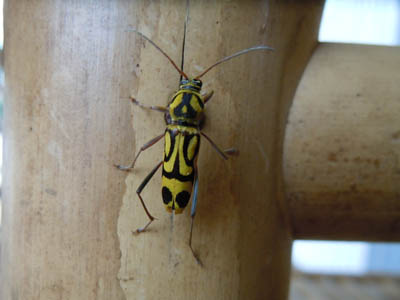
Image Copyright Tijl Adriaen
Last Observed: November 2015
Observed By: Tijl Adriaen
Chlorophorus annularis, a.k.a. the Bamboo Longhorn Beetle, is a species of beetle in the family Cerambycidae. It has an elaborate yellow and black patterned shell.
Image Copyright Tijl Adriaen
Image Copyright Tijl Adriaen
Cicada (Platylomia radha)
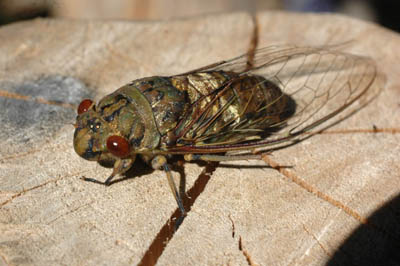
Image Copyright David Newman
Last Observed: December 2015
Observed By: David Newman, Jean-Piere Odet, Supotch White
Cicadas are a widespread insect species that are most common in the tropics. You will seldom see them but if you’re anywhere near one, especially around sunset, you’ll know.
They make a high pitched, screeching sound that can be most disconcerting. They do this using a specially developed exoskeletal structure called a tymbal which they vibrate rapidly with cacaphonic results.
If they fly into your room you can easily pick them up by gently pinching together their wings and set them, and your ears, free.
Platyloma Wikipedia
Image Copyright Jean-Pierre Odet
Image Copyright David Newman
Image Copyright Supotch White




